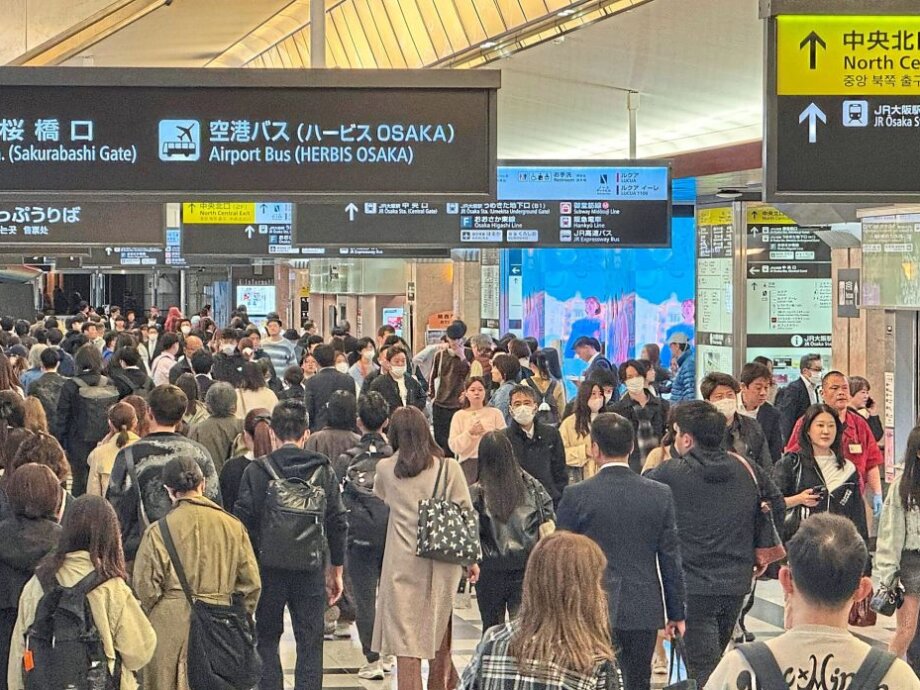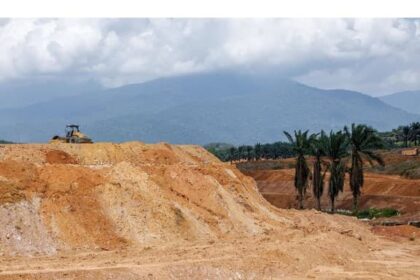Japan’s Record-Breaking Tourism Boom: Opportunity and Overload
Japan is experiencing an unprecedented surge in international tourism. In 2024, the country welcomed a record 36.9 million inbound tourists—a 15.6% increase over its pre-pandemic peak. The momentum has only accelerated in 2025, with over 22 million foreign visitors arriving in the first half of the year alone. This influx has brought in an estimated US$53 billion, making tourism Japan’s second-largest source of foreign exchange after automobiles. Major source markets include South Korea, China, Taiwan, the United States, and Western Europe, with visitors flocking to both iconic cities and rural prefectures.
- Japan’s Record-Breaking Tourism Boom: Opportunity and Overload
- What’s Driving Japan’s Tourism Surge?
- Economic Benefits: A Lifeline for Growth
- The Hidden Costs: Strain on Locals and the Environment
- How Are Authorities Responding?
- Public Sentiment: Mixed Reactions and Calls for Balance
- Lessons for the World: The Risks and Rewards of Overtourism
- In Summary
While this boom has been a boon for Japan’s economy, fueling job creation, infrastructure investment, and revitalizing local businesses, it has also exposed deep challenges. Overcrowding, rising costs, environmental strain, and social tensions are testing the limits of Japan’s famed hospitality and the resilience of its communities.
What’s Driving Japan’s Tourism Surge?
Several factors have converged to make Japan a global tourism hotspot:
- Weak Yen: The Japanese yen has depreciated to its lowest levels since the late 1980s, making travel, shopping, and dining in Japan more affordable for foreign visitors. In June 2024, the yen hit 161 per U.S. dollar, spurring a wave of spontaneous travel.
- Global Events: The upcoming World Expo 2025 in Osaka, along with the legacy of the Tokyo Olympics and Rugby World Cup, has kept Japan in the international spotlight.
- Ease of Access: Relaxed visa requirements, more direct flights, and efficient travel infrastructure have made Japan more accessible than ever.
- Unique Appeal: Japan’s blend of tradition and modernity, safety, natural beauty, cuisine, and pop culture continues to captivate travelers worldwide.
These factors have combined to make Japan not just a bucket-list destination, but a repeat favorite for millions of travelers each year.
Economic Benefits: A Lifeline for Growth
Tourism is now a cornerstone of Japan’s economic growth strategy. The sector contributed an estimated 7.5% to Japan’s GDP in 2024, with foreign visitor spending reaching JPY 7.2 trillion (about US$48 billion). The government aims to double this to JPY 15 trillion by 2030. Local businesses—from traditional inns and restaurants to artisans and retailers—have seen a surge in revenue, and new jobs have been created in hospitality, transportation, and retail.
Major cities like Tokyo, Kyoto, Osaka, and Hokkaido have benefited from increased hotel occupancy, restaurant patronage, and retail sales. Even smaller towns and rural areas are seeing a revival as tourists seek out lesser-known destinations.
Regional governments have invested in infrastructure upgrades, including airport expansions, improved public transportation, and enhanced visitor facilities. The tourism boom has also spurred investment in cultural preservation, with funds directed toward maintaining temples, shrines, and heritage sites.
The Hidden Costs: Strain on Locals and the Environment
Despite the economic windfall, the rapid growth in tourism has brought significant challenges for Japanese residents and the environment. The term kankō kōgai (tourism pollution) has entered the local lexicon, reflecting the daily disruptions and frustrations experienced by many.
Overcrowding and Infrastructure Stress
Popular destinations like Kyoto’s Gion district, Tokyo’s Asakusa, Nara, and Mount Fuji are grappling with severe overcrowding. Public transportation is often packed, making daily commutes difficult for locals. In Kyoto, narrow streets are clogged with tour groups, and buses are so full that residents struggle to board.
Heritage sites and traditional neighborhoods are at risk. In Gion, geisha have faced harassment from tourists seeking photos, prompting bans on photography and restricted access to certain areas. In Fujikawaguchiko, a viral photo spot near Mount Fuji led to such a crush of visitors that authorities erected screens to block the view and posted warnings—measures that tourists have sometimes circumvented.
Rising Costs and Housing Affordability
The tourism boom has driven up the cost of goods, services, and housing in many areas. The average price of a basic hotel room in Tokyo has nearly doubled since 2019, making business travel and domestic tourism less accessible for Japanese residents. In resort towns like Niseko, famous for its powder snow, land prices have nearly tripled since 2017, and many locals have been priced out of the housing market as foreign investors snap up properties.
Stagnant wages and inflation have exacerbated the financial strain. In 2024, average real wages in Japan declined by 0.2%, even as the cost of living rose. Many Japanese now find it harder to afford everyday expenses, let alone leisure travel within their own country.
Environmental Impact
Japan’s natural and cultural treasures are under pressure. Mount Fuji faces trail erosion and litter problems due to the sheer volume of climbers. In Nara, sacred deer are harassed by tourists. The country’s famous hot springs (onsens) are experiencing water shortages, with towns like Ureshino and Ginzan Onsen forced to limit bath usage and consider raising bathing taxes to manage demand and protect resources.
Waste management has become a major issue, with increased litter in public spaces and at heritage sites. Local authorities are struggling to keep up with the demands of millions of extra visitors each year.
Social Tensions and Cultural Erosion
The influx of tourists and foreign workers has sparked social tensions in some communities. Some Japanese feel that the unique character of their neighborhoods is being diluted, and that the benefits of tourism are not evenly distributed. The rise of the ultra-right Sanseito party, which promotes anti-immigration and “Japan First” policies, reflects a growing unease among segments of the population.
While many residents appreciate the economic benefits and the opportunity for cultural exchange, surveys show that nearly half of those living in top tourist destinations feel the negative effects of overtourism—especially in Kyoto, Nara, and Tokyo’s Taito Ward. Complaints include bad tourist manners, crowded transport, and reduced access to local facilities.
How Are Authorities Responding?
Recognizing the risks of overtourism, Japanese authorities at both the national and local levels are implementing a range of measures to manage visitor numbers, protect resources, and ensure that tourism remains sustainable.
Regulating Access and Raising Fees
To control crowds and fund conservation, Japan has introduced or increased entry fees at popular sites. Climbing Mount Fuji now requires a permit costing 4,000 yen (about US$27), double the previous year’s fee, with a daily cap on climbers. Himeji Castle and other attractions are moving to two-tier pricing, charging tourists more than locals. Tourist taxes have been introduced or raised in hotspots like Miyajima, Niseko, and various onsen towns.
Some regions have implemented bans or restrictions on tourist access during peak times, and photography bans are in place in sensitive areas like Kyoto’s Gion district. Local governments are also considering new taxes on accommodation and departures to fund infrastructure improvements and sustainability initiatives.
Promoting Regional and Off-Peak Tourism
To relieve pressure on overcrowded cities, the government and private sector are promoting travel to lesser-known regions. Initiatives include partnerships with airlines and resorts to highlight hidden gems, free domestic flights for international travelers, and marketing campaigns for rural festivals and culinary tourism. Apps and digital signage now provide real-time congestion data to help visitors avoid crowded spots.
Supporting Local Communities and Sustainable Practices
Authorities are investing in infrastructure upgrades, alternative water sources for onsens, and improved waste management. Grants and funding are being directed to local projects that disperse tourists and collect crowd data. Destination Management Organizations (DMOs) are being encouraged to involve all stakeholders—residents, businesses, and government—in planning and managing tourism sustainably.
Educational campaigns aim to improve tourist manners, with creative reminders and nudges to respect local customs and environments. Travelers are encouraged to support local businesses, use public transport, and explore off-the-beaten-path destinations.
Public Sentiment: Mixed Reactions and Calls for Balance
Despite the challenges, most Japanese residents remain broadly positive about tourism’s role in their communities. Surveys show that around 60% of people in top destinations believe tourism enriches their lives and boosts the local economy. Only 15% view tourism as having a negative impact. Many residents report a renewed sense of pride in their hometowns and increased interest in local culture, history, and food.
However, the disruptions to daily life—crowded transport, bad manners, rising costs—are real and growing. Residents want better management of tourist behavior, improved infrastructure, and a fairer distribution of tourism’s economic benefits. There is widespread agreement that sustainable and regenerative tourism, with local ownership and transparent management, is essential for the future.
Lessons for the World: The Risks and Rewards of Overtourism
Japan’s experience offers valuable lessons for other countries facing or aspiring to rapid tourism growth. The economic rewards are substantial, but so are the risks of unchecked overtourism. Without careful management, the very qualities that attract visitors—unique culture, natural beauty, and local hospitality—can be eroded.
Key strategies for sustainable tourism include:
- Regulating visitor numbers and dispersing tourists across regions and seasons
- Investing in infrastructure and resource management
- Involving local communities in decision-making
- Educating visitors on respectful behavior and cultural norms
- Ensuring that economic benefits reach residents, not just large corporations or foreign investors
As Japan adapts to its new reality as a global tourism powerhouse, its successes and struggles will be closely watched by destinations worldwide.
In Summary
- Japan’s tourism boom has set new records, bringing major economic benefits but also significant challenges for locals and the environment.
- Overcrowding, rising costs, housing shortages, and environmental strain are testing the limits of popular destinations.
- The government is responding with higher fees, tourist taxes, access restrictions, and campaigns to promote regional and off-peak travel.
- Most Japanese residents remain positive about tourism’s impact but want better management and fairer distribution of benefits.
- Japan’s experience highlights the importance of sustainable tourism policies and offers lessons for other countries facing overtourism.












